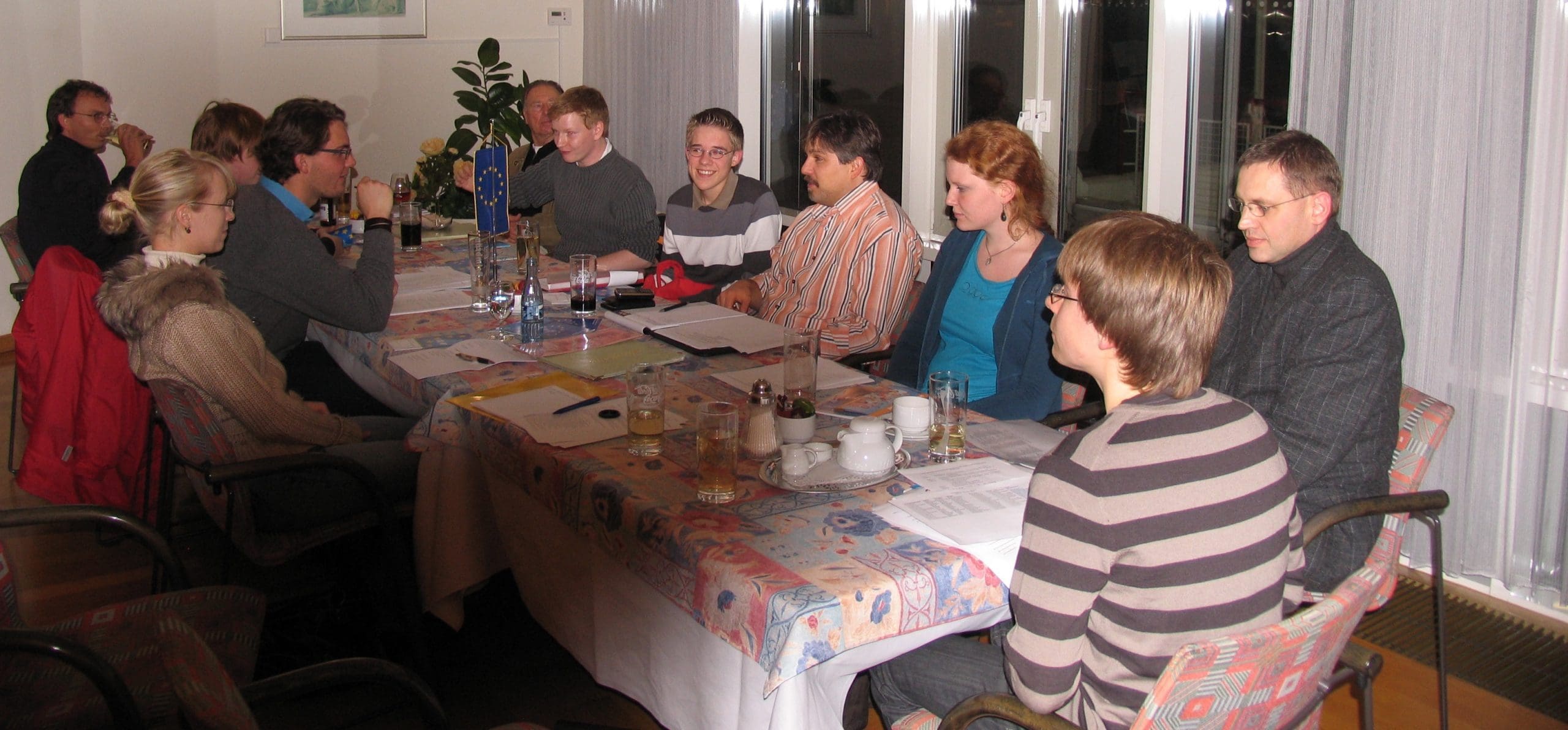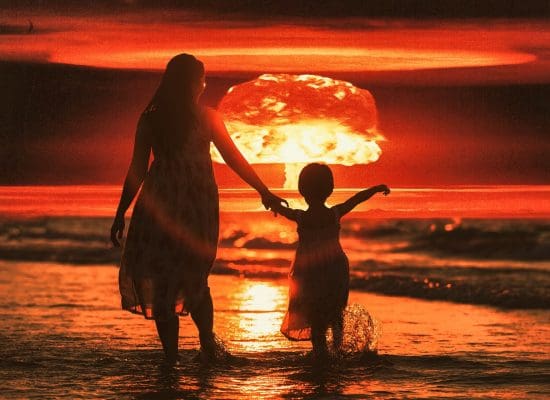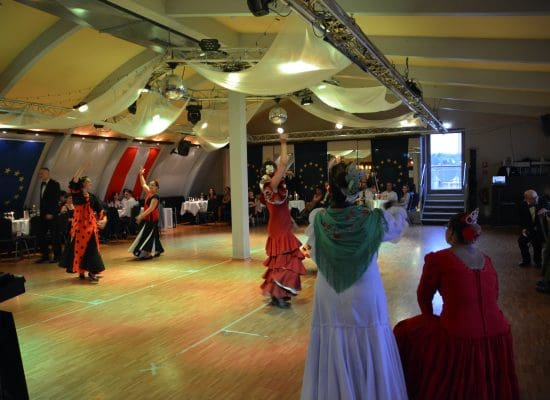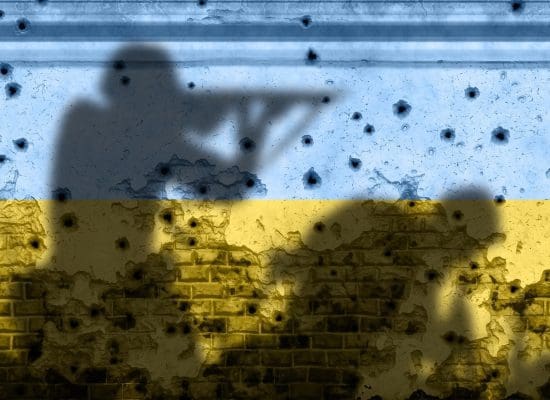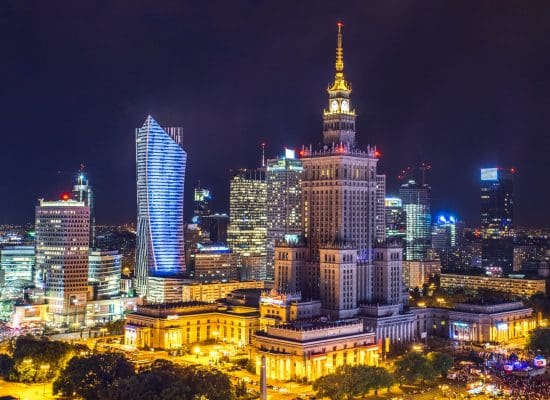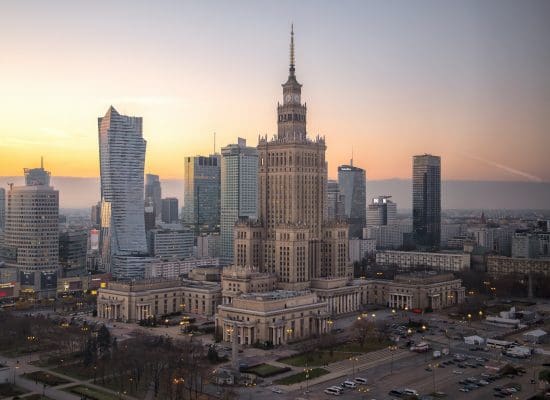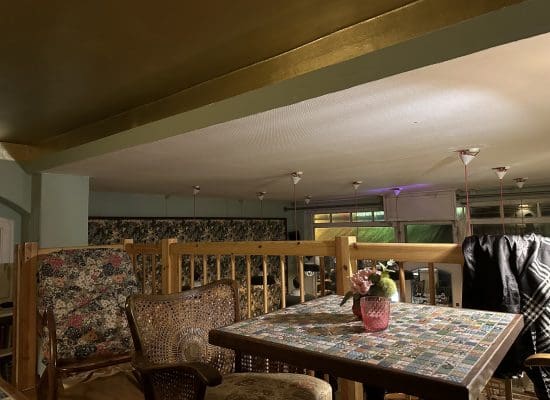Feature photo: JEF meeting 2007 with Dr. Manfred Weinmann | © Bettina Kümmerle
The Young European Federalists (JEF) were founded on October 26, 1947 in Germany as the Union Junges Europa (UJE), renamed the Bund Europäischer Jugend (BEJ) in 1949, and then in 1957 the name of their European umbrella organization, the Young European Federalists, of which they are a subdivision from the start.
Originally founded as a youth organization of the EUROPA-UNION Germany (EUD), they are usually completely independent in accordance with the respective partnership agreements. There has been dual membership between the two associations since 2004, which ensures, among other things, that members of the EUROPA-UNION who have outgrown their youth remain members. And like the EUD, the JEF is a member organization in the European Movement network.
Demanding the "United States of Europe" with waving flags from the beginning, the current political goal of the JEF is a European federation with a bicameral parliament (one for the citizens and one for the states and regions). The distribution of competences should be decentralized according to the principle of subsidiarity.
As late as 2013, the JEF national chairman formulated, Daniel Matteo, the JEF claims as follows:
“In a political environment of discouragement, the Young European Federalists call things like they are. In its program, the JEF demands the completion of the European peace project as a 'United States of Europe': a democratic and constitutional European federal state in which decisions are made at the most meaningful and effective political level. In its central demands, it builds on the Hertenstein program of 1946, but then makes it more concrete and promotes federalist positions.”
Daniel Matteo (2013)
Basically, the JEF sees Europe as "a place to meet and get to know each other" and therefore tirelessly tries to bring young Europeans together at local, regional, national or European level to discuss a Europe in diversity.
The organs of the JEF are the annual federal congress, which is made up of delegates from the state associations, the federal committee, which meets five times a year, and the federal board elected by the federal congress, as well as the federal secretary elected by the federal committee at the suggestion of the federal board, who works with a full-time federal manager and other employees form the Federal Secretariat based in Berlin.
Occasionally, new names have recently been used again in the youth association, probably in order to be attractive to a larger interest group by eliminating political terms, which always contain a political perspective, or just to better take into account the political disinterest among young people; the name 'Young Europeans' was and is often used.
JEF Germany is divided into corresponding state associations, which are also further subdivided. And as is usual with federalists, the hard work at the JEF also takes place at the local level in the local district associations, where politics can be experienced most. And it is precisely this local colour, paired with a European's desire to travel, that brings people together and creates experiences that even former JEFs still report on decades later; I am one of those people too.
My own time with the JEF was, amazingly and totally unusual for the younger European Federalists, limited to purely local projects and events. Looking back, I have to say that I was 'reactivated' in 1992 by the then JEF district chair for a certain series of events and then, for purely personal reasons - I fell head over heels in love with the same person - I made Europe an affair of the heart.
Since my former JEF district chair and current wife corresponded more to the image of a young European federalist, I was often able to follow the diverse activities of the JEF in the function of an observer and later also participate in some projects as an 'ex-member'.
My experience, which was also later confirmed again and again, is that it is the great advantage of a youth organization to debate the big issues of this world completely carefree and to present possible solutions without ever finding out the details correctly or the having researched the background sufficiently.
But this is exactly the function and task of every youth association! On the one hand, perspectives can emerge from this that a closer look at is useful for the overall process and, on the other hand, it trains and inspires the future European federalists for later active participation in the association.
When a 'Young European' then feels fit and ready to contribute constructively to the EUROPA-UNION at district level is up to you, but by the age of 35 at the latest, the limit age for most political youth organizations, this should then have happened.
My lesson from the experiences with both associations and from working together in joint working groups is that the latter usually makes little sense, since both the way of working and the goals strived for are often incompatible. So my suggestion, loosely based on Moltke the Elder: Let's continue to march separately, but fight together.
However, it would be worth further and fundamental consideration as to whether the reasons for separation, which were to be found in the post-war years, should not generally be ignored and all people, regardless of age, gender, inclination, etc., should be brought together in a single association. The actually existing number of European federalists would certainly not be an obstacle, at most the all too human desire to grant everyone a post, even if it was one in a youth organization.
"Because of their dependence on one another, people should organize their interaction in such a way that they understand their interest as a common one, and therefore do not instrumentalize one another or compete with one another, but rather work together as effectively as possible after discursive understanding about this common interest."
Robert Spaemann (2012: 293)
If you are now a little more curious, I recommend reading my book Europe is for everyone!
You can also get more details about the book here .
